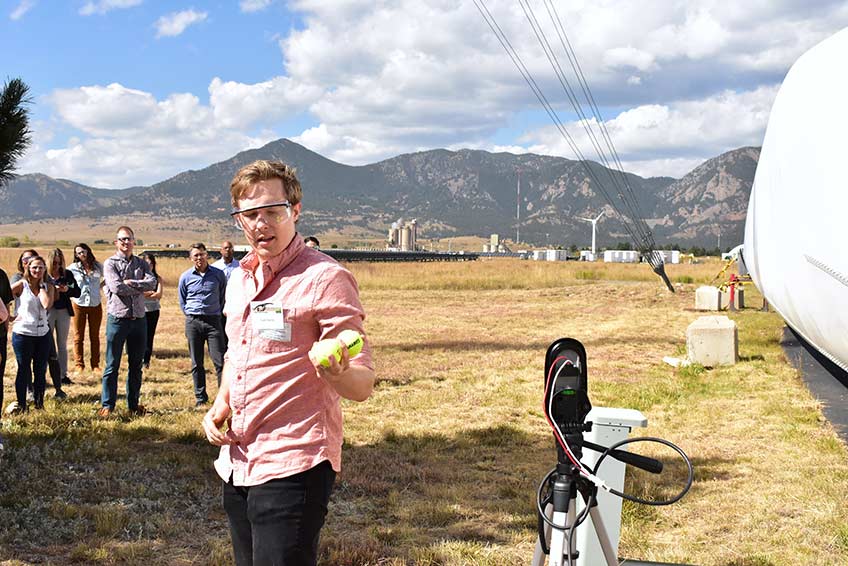Training Convenes Wind-Wildlife Experts To Share Latest Research and Emerging Technologies

Nearly 30 members of the U.S. Department of Energy (DOE) Wind Energy Technologies Office visited the Flatirons Campus of the National Renewable Energy Laboratory (NREL) to discuss and identify the best wind-wildlife impact minimization strategies for the efficient deployment of cost-effective wind energy projects across the United States.
NREL hosted the event, inviting experts from across the national lab complex, wind energy industry, academia, nonprofit sector, and private consultants to share challenges they face and possible solutions to address wind-wildlife issues. The training provided an opportunity to highlight cutting edge work supported by NREL and DOE in this area, such as the modular impact detection and deterrent system being developed by Oregon State University. Wind Energy Technologies Office employees received a small test of this system.
“Minimizing impacts to wildlife from wind energy is a major priority shared by NREL, the wind energy industry, conservation organizations and the federal regulatory body,” said NREL Research Analyst Bethany Straw. “Impacts to wildlife can extend permitting timelines, add unanticipated costs, and constrain energy generation. Events like this training help push the wind-wildlife impact minimization conversation forward by allowing us to share strategies and technologies with one another to advance wind energy deployment while protecting various bird and bat species.”
Training participants identified several challenges that require further attention—chiefly data collection and analysis. Data collection at both regional and local scales is necessary, with regional wildlife data needing to be more generalized so that it can be applied in localized contexts when making wind plant siting decisions—something that is difficult, considering the unique behaviors and interactions wildlife species exhibit near wind facilities in various geographic contexts.
Despite these challenges, training participants also set their sights on the future, discussing research questions about how wildlife will interact with the future fleet of wind turbines and tomorrow’s hybrid power plants. As wind energy continues to supply more power to the grid, cost-effective solutions to detect and deter wildlife from wind energy facilities are critical.

